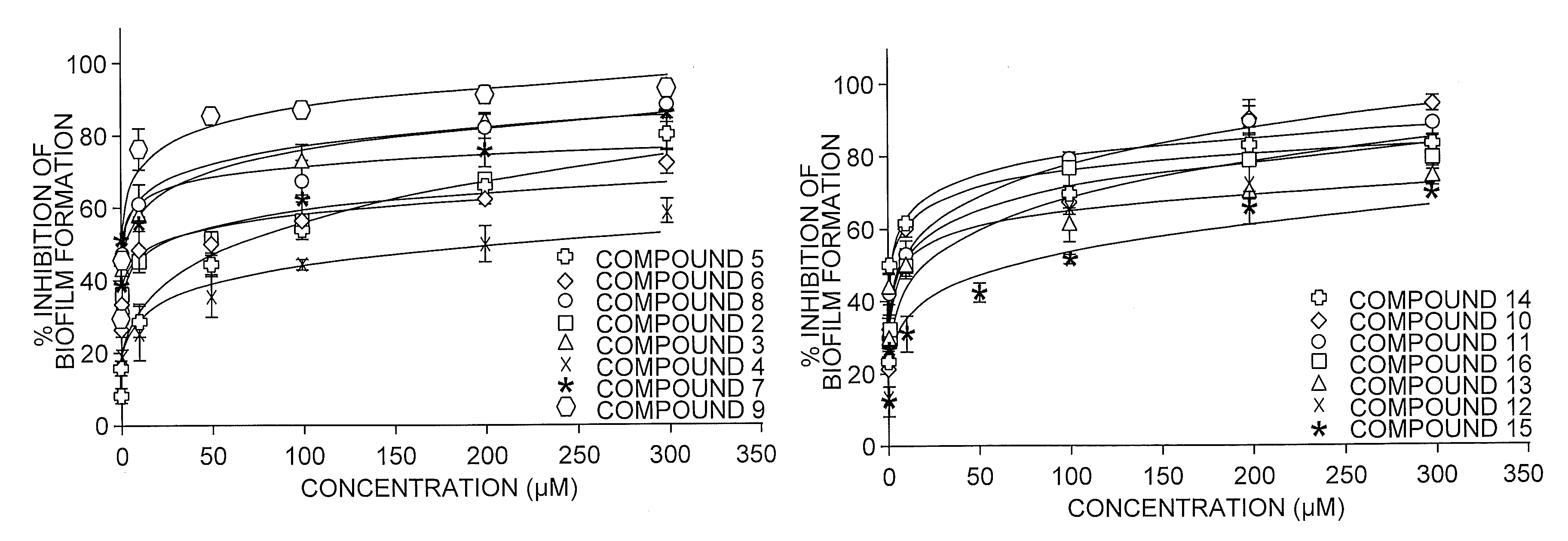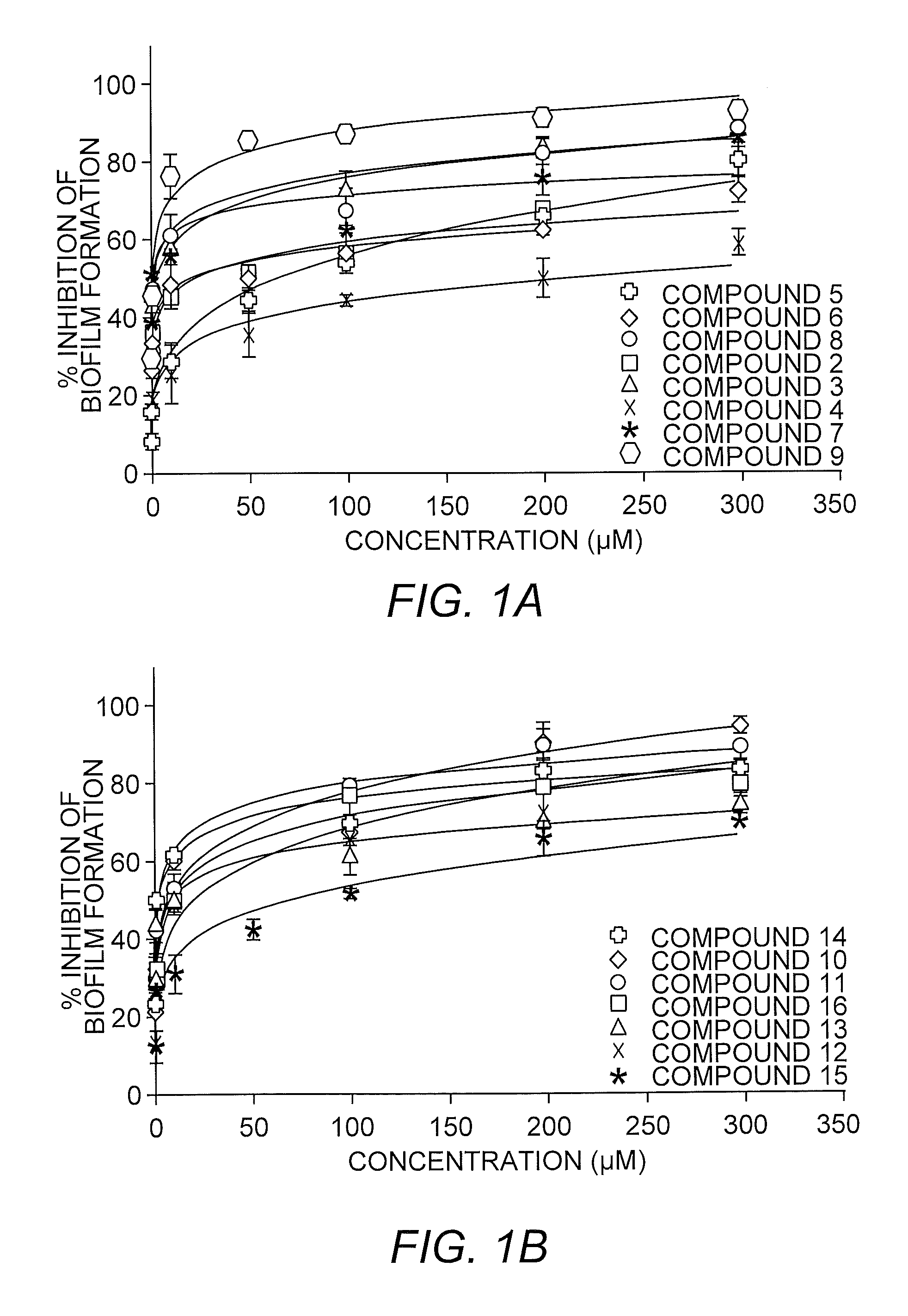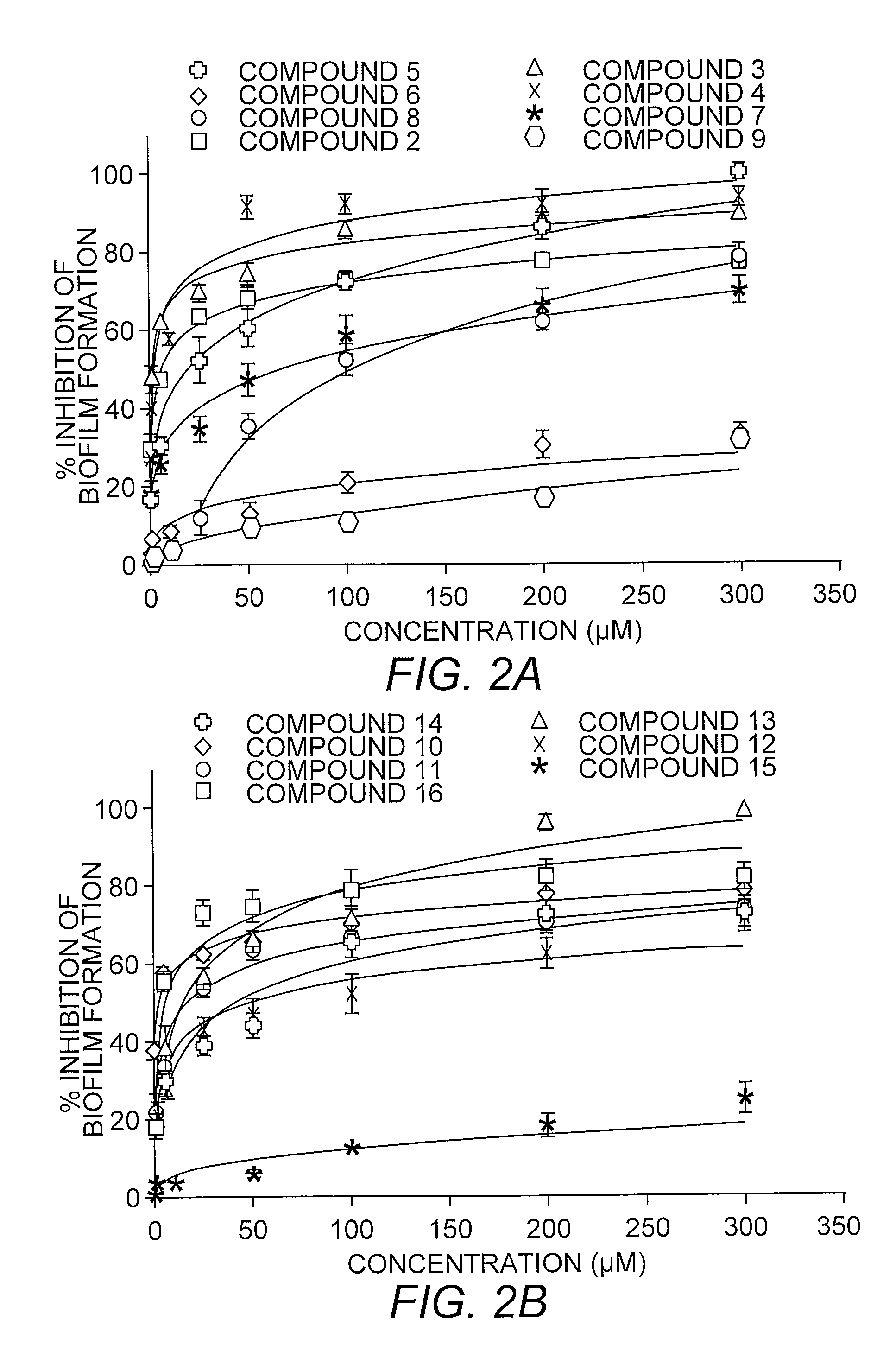Inhibition and dispersion of bacterial biofilms with benzimidazole derivatives
a technology of benzimidazole and biofilm, which is applied in the field of inhibition and dispersion of bacterial biofilms with benzimidazole derivatives, can solve the problems of inability to eradicate infections of indwelling medical devices, deleterious effects of biofilms in non-medical settings, and serious problems for patients. , to achieve the effect of preventing, reducing, inhibiting or removing a biofilm
- Summary
- Abstract
- Description
- Claims
- Application Information
AI Technical Summary
Benefits of technology
Problems solved by technology
Method used
Image
Examples
example 1
[0231]The decision to study the 2-ABI scaffold was based upon previous studies in our group that analyzed the anti-biofilm properties of a number of small molecules based upon the natural product bromoageliferin (see Melander et al., U.S. Patent Application Publication 2008 / 0181923). One of the first derivatives studied was TAGE, a bicyclic 2-aminoimidazole (2-AI) that represented the core architecture of bromoageliferin. The 2-ABI scaffold is a readily accessible, aromatized analogue of TAGE, which we hypothesized would provide unique and / or improved anti-biofilm properties in comparison to these 2-AI derivatives.
[0232]A preliminary library of 2-ABI analogues was synthesized for anti-biofilm evaluation (Scheme 1). An isomeric mixture of tri-boc protected 5-amino, 2-ABI (1) (Kikuchi et al., Bioorg. Med. Chem. 14:6189-6196 (2006)) was acylated with an array of cyclic anhydrides that were subsequently deprotected to generate an initial set of 2-ABI derivatives. A related set of 2-ABI ...
example 2
Protocols for 2-ABI Synthesis and Activity Testing
[0246]All reagents used for chemical synthesis were purchased from commercially available sources and used without further purification. Chromatography was performed using 60 {acute over (Å)} mesh standard grade silica gel from Sorbtech. NMR solvents were obtained from Cambridge Isotope Labs and used as is. NMR (300 MHz or 400 MHz) and 13C NMR (75 MHz or 100 MHz) spectra were recorded at 25° C. on Varian Mercury spectrometers. Chemical shifts (6) are given in ppm relative to tetramethylsilane or the respective NMR solvent; coupling constants (J) are in hertz (Hz). Abbreviations used are s=singlet, bs=broad singlet, d=doublet, dd=doublet of doublets, t=triplet, dt=doublet of triplets, bt=broad triplet, qt=quartet, m=multiplet, bm=broad multiplet and br=broad. Mass spectra were obtained at the NCSU Department of Chemistry Mass Spectrometry Facility.
[0247]MRSA (ATCC #BAA-44), Enterococcus faecium (ATCC #51559), MDRAB (ATCC #BAA-1605) an...
PUM
| Property | Measurement | Unit |
|---|---|---|
| composition | aaaaa | aaaaa |
| polymeric | aaaaa | aaaaa |
| compositions | aaaaa | aaaaa |
Abstract
Description
Claims
Application Information
 Login to View More
Login to View More - R&D
- Intellectual Property
- Life Sciences
- Materials
- Tech Scout
- Unparalleled Data Quality
- Higher Quality Content
- 60% Fewer Hallucinations
Browse by: Latest US Patents, China's latest patents, Technical Efficacy Thesaurus, Application Domain, Technology Topic, Popular Technical Reports.
© 2025 PatSnap. All rights reserved.Legal|Privacy policy|Modern Slavery Act Transparency Statement|Sitemap|About US| Contact US: help@patsnap.com



